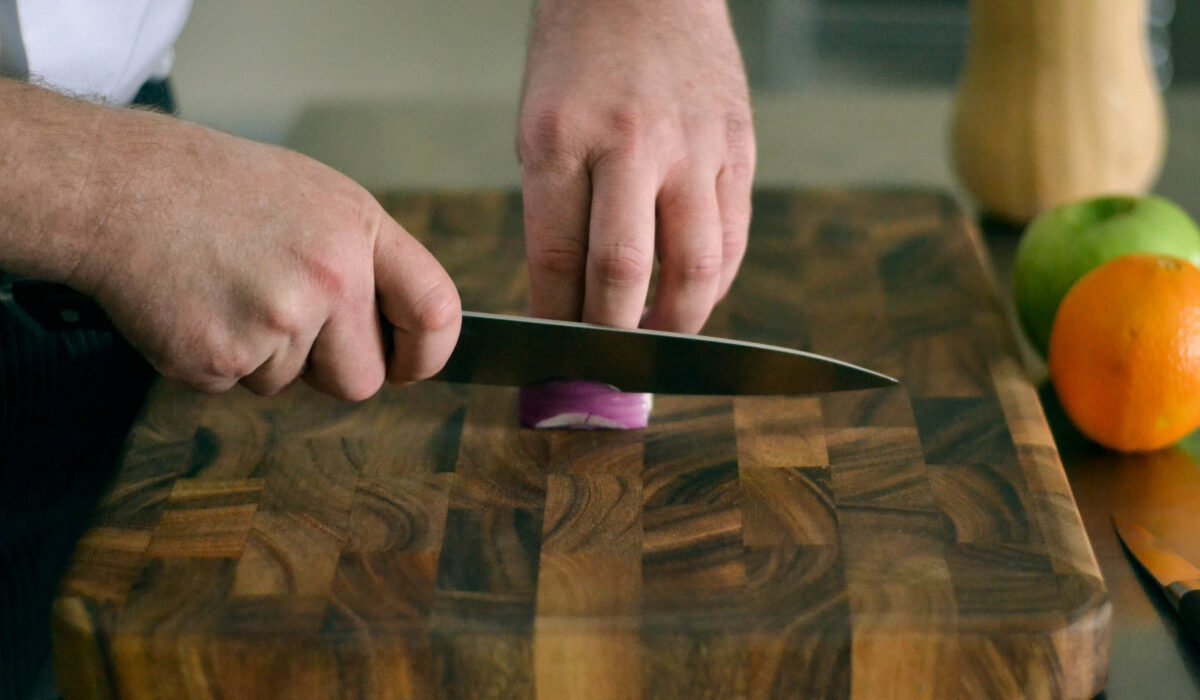For both professional chefs and cooking enthusiasts, mastering German knife cutting techniques is essential. Known for their precision and durability, German knives are cherished worldwide. In this article, we will delve into various techniques that enhance your cutting skills, making your kitchen experience more efficient and enjoyable.

Understanding German Knives
German knives are renowned for their robust construction and versatility. Unlike their Japanese counterparts, German knives are designed to handle a variety of tasks with ease. Their blades are typically thicker and heavier, providing stability and power.
The Anatomy of a German Knife
Understanding the anatomy of a German knife is crucial for mastering cutting techniques. The blade, handle, bolster, and tang each play a significant role in the knife’s performance. A well-balanced knife with a comfortable grip ensures precision in every cut.
Basic Cutting Techniques
1. The Rock Chop
The rock chop is a fundamental technique used with German knives. By keeping the knife tip on the board and rocking the blade back and forth, you can achieve consistent, fine cuts. This technique is ideal for chopping herbs and vegetables.
2. The Push Cut
The push cut involves moving the knife forward through the food. It’s perfect for slicing meats and larger vegetables. The weight and sharpness of the German knife make this technique smooth and efficient.
Advanced Cutting Techniques
3. The Pull Cut
In the pull cut, the knife is drawn back through the food. This method is excellent for slicing delicate items like fish, ensuring clean and precise cuts without tearing.
4. The Guillotine-and-Glide
This technique combines the power of the guillotine motion with the finesse of a glide. Its perfect for slicing bread and other baked goods, maintaining the integrity of the crust.
Tips for Maintaining Your German Knife
Proper maintenance is key to sustaining the performance of your German knife. Regular honing, careful cleaning, and correct storage can extend the life of your knife significantly. For more detailed tips, visit Knife Care Tips.
Choosing the Right Knife
Choosing the right German knife depends on your specific needs. Whether it’s a chef’s knife for general use or a specialized bread knife, understanding your requirements will guide your purchase. For recommendations, check out our article on German Knives for Professionals.
Comparing German and Japanese Knives
While both German and Japanese knives have their merits, the choice often comes down to personal preference and intended use. For a detailed comparison, see Japanese vs. German Steel.
Essential Knife Skills for Chefs
Developing essential knife skills is crucial for efficiency and safety in the kitchen. Mastering techniques like the julienne and chiffonade will enhance your culinary creations.
Julienne Cutting
The julienne cut involves slicing food into thin, matchstick-like pieces. This technique is commonly used for vegetables and adds a professional touch to dishes.
Chiffonade Technique
Chiffonade involves rolling leafy vegetables or herbs into a cigar shape and slicing them into thin ribbons. It’s perfect for garnishing and adding flavor to dishes.
Safety Tips When Using German Knives
Safety should always be a priority when using sharp tools like German knives. Maintaining a firm grip, keeping your fingers tucked away, and using a stable cutting board are essential safety practices.
The History of German Knives
German knives have a rich history dating back centuries. Brands like Zwilling have become synonymous with quality and tradition. Learn more about their origins in our article on the History of Zwilling Knives.
Testing Knife Sharpness
Ensuring your knife is sharp is vital for effective cutting. Simple tests, such as the paper test, can help gauge sharpness. For a detailed guide, visit Knife Sharpness Test.

FAQs
What is the best way to sharpen a German knife?
Using a whetstone or sharpening steel is recommended for maintaining a sharp edge on your German knife.
How often should I hone my German knife?
Regular honing after every few uses is ideal to maintain the blade’s edge.
Can I use a German knife for all types of cutting?
While versatile, it’s best to use specialized knives for specific tasks, such as a bread knife for slicing bread.
Mastering German knife cutting techniques is an invaluable skill in the kitchen. With practice, you can enhance your culinary prowess and create dishes with precision and artistry.
This article contains affiliate links. We may earn a commission at no extra cost to you.


